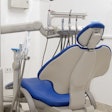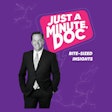
After 32 years of looking extensively into the mouths of more than 10,000 dental practices, we have found dentists don't really look at their numbers -- or if they do, they do not look at what these numbers actually mean. Let's take a look at these numbers from a financial point of view.
In managing a practice's finances, one of the main objectives is to increase profit. Profit comes from earning more than you spend. That's a two-sided coin. You can increase profit by decreasing overhead in the correct categories or increasing income. If the main factors of overhead, such as payroll, lab fees, rent, supplies, etc., are relatively fixed, the area to focus on is increasing income, meaning gross production/adjusted production.
Where to start
The end-of-the-month summary report is a good place to start. The report shows where the money came from and can give you an idea of what you need to strengthen or correct. Without the facts, the tendency is to "do more of everything," or "get more crown and bridge," or "get more new patients."
 Kevin Wilson is the CEO of Sterling Management.
Kevin Wilson is the CEO of Sterling Management.Most dental practice management programs, such as Dentrix, Eaglesoft, and SoftDent, are set with a default breakdown that shows the total dollars produced and what services were delivered in dollar amounts. These reports also show the percentage of production that each category of services produced. The percentage of dollars in each category is just as important as the total dollars in each category. This is important, because if you do not break down these specific categories, you cannot understand what they mean to your practice.
It's one thing to look at this report. However, when looked at in its printed form each month, it's easy to miss the month-to-month variations, some of which are crucial. For example, let's say the number of new patients has been increasing every month, but your overall production has been declining. You would want to look at the total number of patients seen monthly, because it could be that recall fell off. The office has been so busy with the new patients that nobody had time to do recall and reactivation.
If the number of total patients seen has also been climbing, it is likely that your closing ratio has fallen (which you can also see on the reports). Again, it could be because you were too busy to spend the necessary time on each patient to get their understanding and agreement to do the treatment, or perhaps you were diagnosing a lot of work and getting agreement but not able to schedule it right away.
“Without the facts, the tendency is to ‘do more of everything,’ or ‘get more crown and bridge,’ or ‘get more new patients.’”
Whatever the reason, an analysis of the different stats and trends would show you what to do to improve the situation. Most owners do know the key services that produced income. But they don't always know what caused these key services to go up or down. By looking at all of the data on the monthly report, you can tell what key statistic caused the production/collection statistic to change.
For instance, you might find that when the number of periodic exams go down, the number of crown and bridge procedures goes down. Or when new patient full-mouth x-rays go down, crown and bridge go down. Or, when emergency exams go up, crowns and bridges also go up.
If you look at all the stats and compare them to each other, they will tell the tale, in facts.
The following is a list of the key data you need:
- Total gross production
- Total adjusted production (production charges after insurance write-offs and other discount write-offs, such as free exams, senior citizen, advance payment, or professional courtesy discounts)
- Total income
- Total hygiene
- Total new patient exams
- Total new patient x-rays
- Total periodic exams
- Total periodic x-rays
- Total emergency exams
- Total crowns (includes pontics in some computer programs)
- Total root canals
- Total fillings
- Total extractions
- Total prosthetics, includes upper and lower partials and dentures
Depending on how you practice, you may have other services delivered, such as orthodontia, oral surgery, periodontic procedures like bone grafts, and teeth whitening. These can be looked at from practice to practice.
Using these tools, you can be in the driver's seat, successfully navigating your practice's difficulties, economic fluctuations, and insurance policy changes, arriving at your destination of a prosperous and enjoyable practice that you look forward to working in everyday.
Kevin Wilson is the CEO of Sterling Management. He can be reached at [email protected].
The comments and observations expressed herein do not necessarily reflect the opinions of DrBicuspid.com, nor should they be construed as an endorsement or admonishment of any particular idea, vendor, or organization.



















